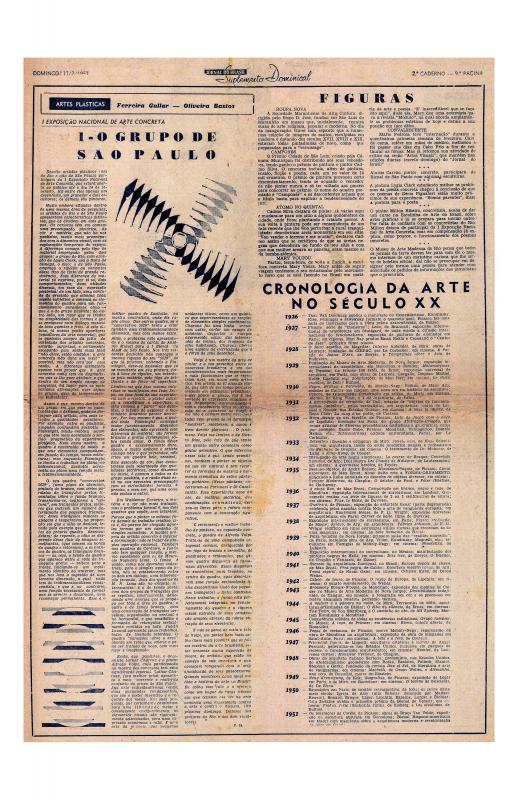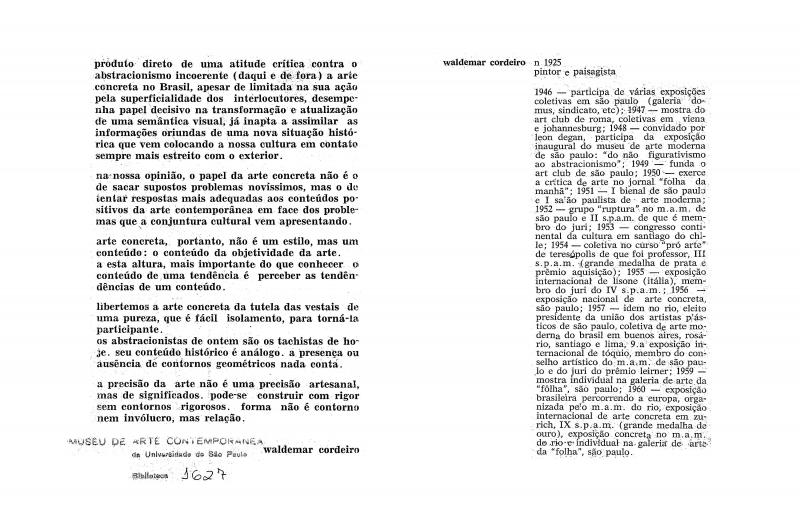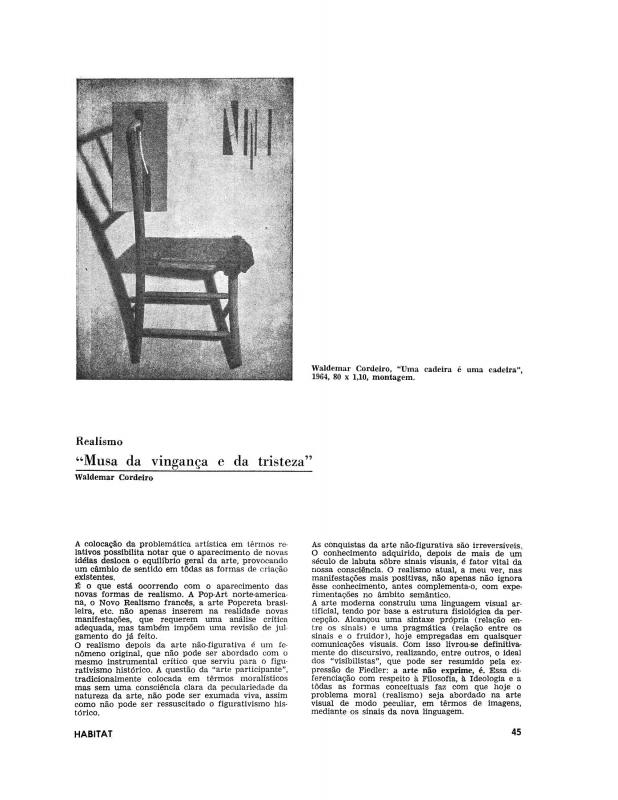The combative painter, designer, landscape painter, art critic, and theoretician Waldemar Cordeiro (1925–73) outlines his ideas on theory and practice in the field of art and technological advances. Cordeiro also worked as an art critic; in the late 1940s he began reviewing Brazilian abstract and Concrete art in his own very distinctive style. He began his career in Rome, but then after the war, he came to Brazil, from where his father came. He settled in São Paulo, and as his articles began to appear in the local Italian community newspapers, he gradually emerged as the leader and spokesman of the radical Concrete movement called “Ruptura.” From the early 1950s, Cordeiro, like Max Bill, worked with mathematical concepts and geometrical forms that he used as a means rather than as an end.
The Iª Exposição Nacional de Arte Concreta was presented in December 1956 at the Museu de Arte Moderna in São Paulo. It subsequently, in January and February of the following year, traveled to the Ministério da Educação e da Saúde in Rio de Janeiro, where for the first time, it showcased the work of visual artists and poets from both cities. In this essay the artist Waldemar Cordeiro disputes the idea expressed by Ferreira Gullar in his article, “Pintura concreta,” that appeared in the Suplemento Dominical do Jornal do Brasil on February 10, 1957. Both men took part in that first Concrete art exhibition, and as critics, launched the important debate that caused the polarization between Rio de Janeiro artists (“cariocas”) and São Paulo artists (“paulistas”) within the Concrete art movement. On this matter, see also the complementary article that sparked the controversy, “Iª Exposição Nacional de Arte Concreta: I - O Grupo de São Paulo” written by Ferreira Gullar [doc. no. 1087166].
The essential disagreement arose from the fact that Ferreira Gullar endorsed the historical and cultural aspect of art, whereas Cordeiro believed that art was an autonomous universal language. Cordeiro’s defense of Concrete art (understood as a real object in the real world) is based on the ideas of the German philosopher Konrad Fiedler, the Italian thinker and politician Antonio Gramsci, and Gestalt theory. The heated discussion that ensued in the Brazilian press gradually created the radical schism between Concrete and Neo-Concrete art that perpetuated the simplistic idea that “paulista” artists are more likely to be “rationalists,” whereas “carioca” artists are more “subjective.” In addition, see the following by Waldemar Cordeiro “[Produto direto de uma atitude crítica]” [doc. no. 1087239], and “Realismo: ‘musa da vingança e da tristeza’” [doc. no. 1110839].



